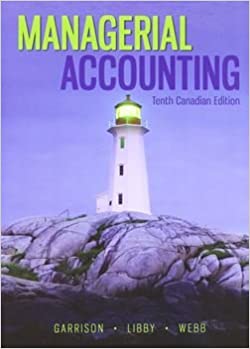Description
Managerial Accounting Canadian 10th Edition by Garrison – Test Bank
Chapter 3
1. Expense A is a fixed cost; expense B is a variable cost. During the current year, the activity level
has increased but is still within the relevant range. In terms of cost per unit of activity, you would
expect which of the following statements to be true?
A. Expense A has remained unchanged.
B. Expense B has decreased.
C. Expense A has decreased.
D. Expense B has increased.
2. Which costs will change with a decrease in activity within the relevant range?
A. Total fixed costs and total variable costs.
B. Unit fixed cost and total variable costs.
C. Unit variable cost and unit fixed cost.
D. Unit fixed cost and total fixed costs.
3. Within the relevant range of activity, how will variable cost per unit behave?
A. It will increase in proportion with the level of activity.
B. It will remain constant.
C. It will vary inversely with the level of activity.
D. Its behaviour cannot be determined without additional information.
4. What will result from an increase in the activity level within the relevant range?
A. An increase in fixed cost per unit.
B. A proportionate increase in total fixed costs.
C. An unchanged fixed cost per unit.
D. A decrease in fixed cost per unit.
5. What does the term “relevant range” mean?
A. The range within which costs may fluctuate.
B. The range within which a particular cost formula is valid.
C. The range within which production may vary.
D. The range within which the relevant costs are incurred.
6. The linear equation Y = a + bX is often used to express cost formulas. Which of the following
representations in this equation is correct?
A. The b term represents variable cost per unit of activity.
B. The a term represents variable cost in total.
C. The X term represents total costs.
D. The Y term represents total fixed costs.
7. Which of the following is an example of a discretionary fixed cost?
A. Insurance.
B. Taxes on real estate.
C. Management training.
D. Amortization of buildings and equipment.
8. Which of the following is an example of a committed fixed cost?
A. A training program for salespersons.
B. Executive travel expenses.
C. Property taxes on the factory building.
D. New product research and development.
9. What are discretionary fixed costs?
A. They vary directly and proportionately with the level of activity.
B. They have a long-term planning horizon, generally encompassing many years.
C. They are made up of plant, equipment, and basic organizational costs.
D. None of these options.
10. In describing the cost formula equation Y = a + bX, which of the following statements is correct?
A. The X term is the dependent variable.
B. The a term is the fixed component.
C. In the high-low method, the b term equals change in activity divided by change in costs.
D. As the X term increases, the Y term decreases.
11. Which of the following best describes the contribution approach to the income statement?
A. It organizes costs on a functional basis.
B. It shows data based on the cost behavior aspect of fixed and variable.
C. It shows a contribution margin rather than an operating income figure at the bottom of the
statement.
D. It can be used only by manufacturing companies.
12. Contribution margin is the excess of revenues over which of the following?
A. Cost of goods sold.
B. Manufacturing cost.
C. All direct costs.
D. All variable costs.
13. Which of the following is an example of a cost that is variable with respect to the number of units
produced and sold?
A. Insurance on the headquarters building.
B. Power to run production equipment.
C. Supervisory salaries.
D. Amortization of factory facilities.
14. What is a cost driver?
A. It is the largest single category of cost in a company.
B. It is a fixed cost that cannot be avoided.
C. It is a factor that causes variations in a cost.
D. It is an indirect cost that is essential to the business.
15. The following data pertain to activity and costs for two months:
Assuming that these activity levels are within the relevant range, what were the mixed costs for
November?
A. $20,000
.
B. $25,000
.
C. $35,000
.
D. $40,000





Be the first to review “Managerial Accounting Canadian 10th Edition by Garrison – Test Bank”